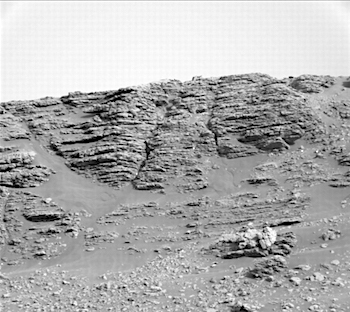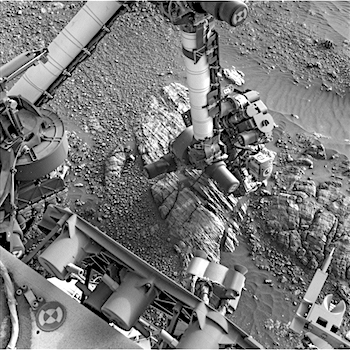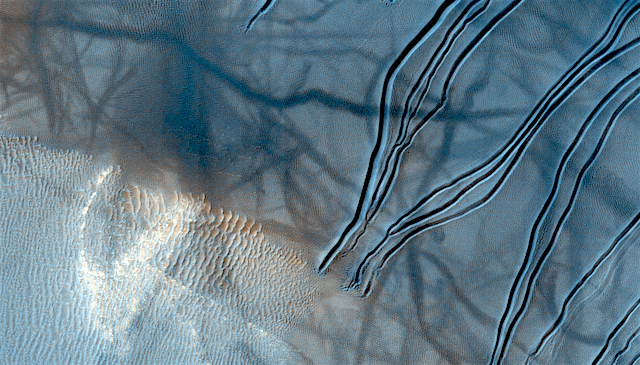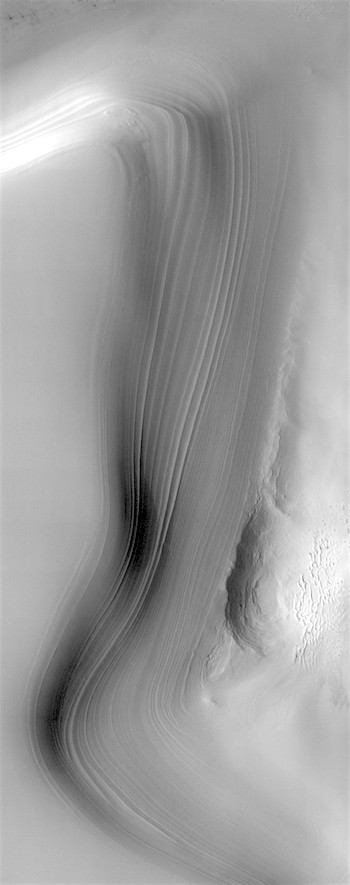 Sol 2474, July 22, 2019, update by MSL scientist Kristen Bennett: Today’s one-sol plan included both remote science and contact science. The team planned a large Mastcam mosaic of the outcrop located to the south of Curiosity. The image above shows a Mastcam image of a different part of the outcrop that was imaged last week. When we see outcrops like this one that show a vertical exposure of laminated rocks, we capture it in high resolution Mastcam images so that scientists can look for sedimentary structures that give us clues as to how the rock formed… [More at link]
Sol 2474, July 22, 2019, update by MSL scientist Kristen Bennett: Today’s one-sol plan included both remote science and contact science. The team planned a large Mastcam mosaic of the outcrop located to the south of Curiosity. The image above shows a Mastcam image of a different part of the outcrop that was imaged last week. When we see outcrops like this one that show a vertical exposure of laminated rocks, we capture it in high resolution Mastcam images so that scientists can look for sedimentary structures that give us clues as to how the rock formed… [More at link]
-
Recent Posts
Archives
Links
general
mission instruments
- CRISM: Compact Reconnaissance Imaging Spectrometer for Mars
- CTX: Context Camera
- HiRISE: High Resolution Imaging Science Experiment
- MARSIS: Mars Advanced Radar for Subsurface and Ionosphere Sounding
- SHARAD: Shallow Radar
- THEMIS: Thermal Emission Imaging System
missions
- All Mars missions list
- Curiosity rover
- ExoMars
- Hope (al-Amal) orbiter
- InSight
- Mars Atmosphere and Volatile Evolution Mission (MAVEN)
- Mars Exploration Rovers (MER)
- Mars Express (MEX)
- Mars Odyssey
- Mars Orbiter Mission (MOM) / Mangalyaan
- Mars Reconnaissance Orbiter (MRO)
- Mars Science Laboratory (MSL)
- Perseverance Rover
- Tianwen-1 orbiter/rover
news















